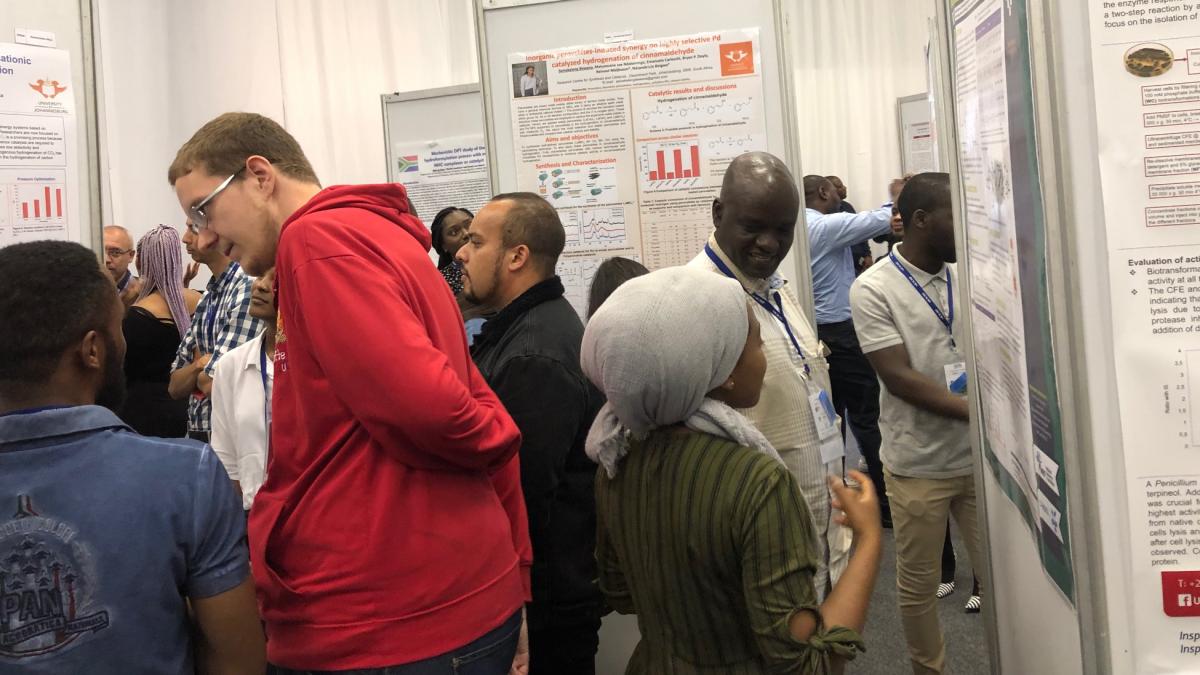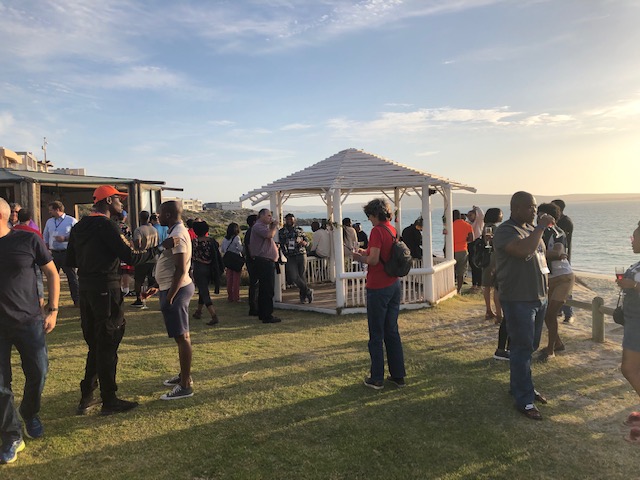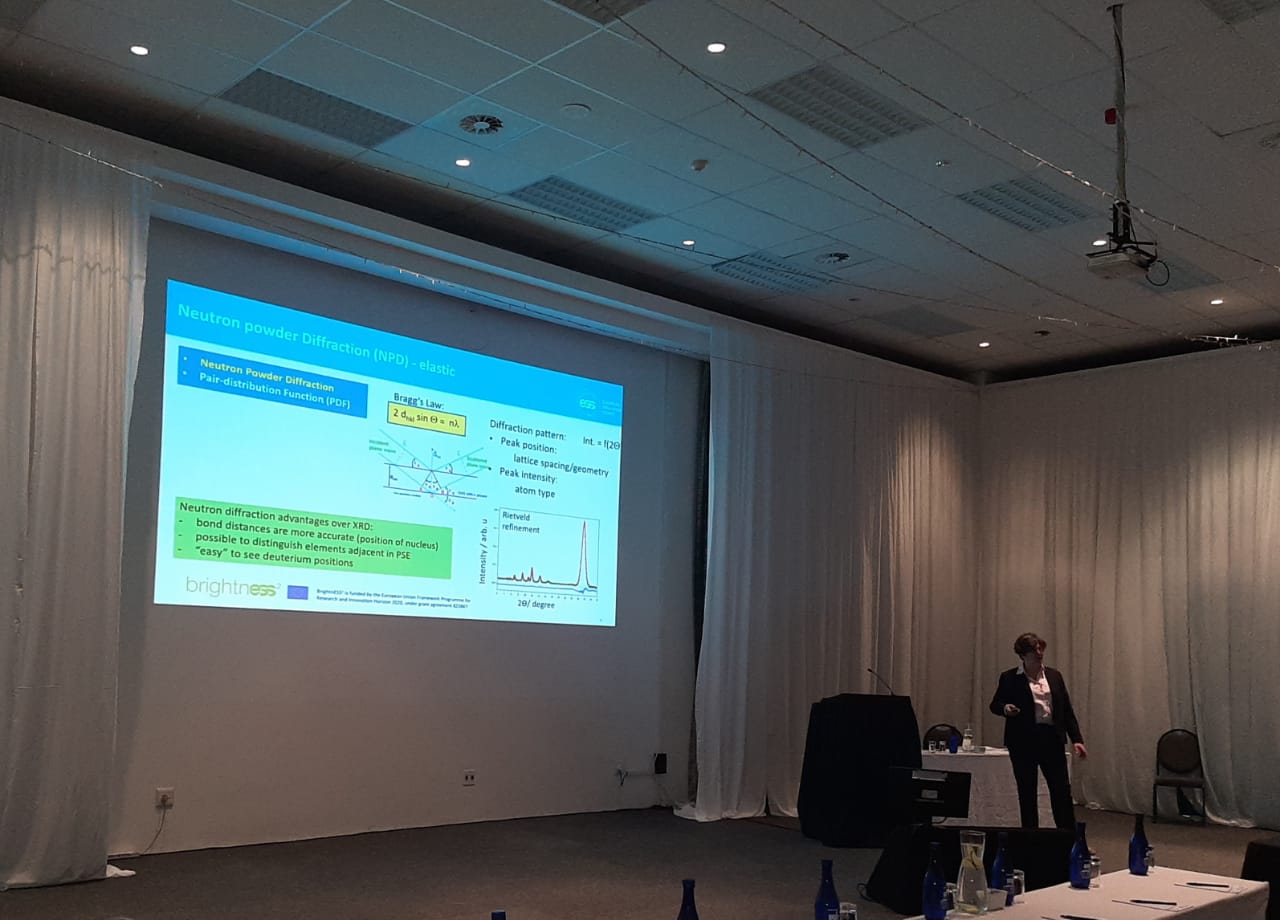ESS in South Africa: Highlighting the importance of neutron scattering to cutting-edge catalysis research

|
ABOVE: Poster session at CATSA 2019, held November 10-13 in Langebaan, South Africa. BELOW: The informal setting allowed for opportunities for networking and candid exchanges between students and researchers. |
 |
LANGEBAAN, SA—European Spallation Source (ESS) instrument scientist Monika Hartl gave a keynote presentation at the Catalysis Society of South Africa’s annual conference, CATSA 2019, last week. As part of ESS enlargement efforts, Hartl outlined the advantages of using neutron scattering in catalysis research for science and industry. The high neutron flux of ESS will enable a new level of in situ observation of catalytic reactions, signaling a breakthrough in this exciting research that has implications for major challenges in the energy and health sectors.
New catalysis hub taking shape in Sweden
Currently, the UK’s ISIS Neutron & Muon Source and the adjacent Diamond Light Source together serve as the most active European hub for catalysis research, used by academic and industrial researchers alike. Neutron beams and synchrotron X-rays give complementary information on the structure and dynamics of catalytic reactions. A next-generation hub is taking shape in Lund, Sweden, where Sweden’s state-of-the-art national synchrotron MAX IV has entered operations while, next door, ESS is scheduled to produce its first scientific experiments in 2023.
Hartl is instrument scientist for the ESS vibrational spectrometer VESPA, which will be the leading such instrument in the world when it goes online. VESPA, a joint in-kind contribution to ESS from Italy and the UK, will enable in situ analysis of catalytic reactions at the molecular level, which is widely seen as the necessary next step in catalysis research. It is envisioned that the instrument’s capabilities will open the doors to advance futuristic technologies derived from novel materials such as polymers, metal-organic frameworks (MOFs) and zeolites. A better understanding of catalytic reactions occurring on the surfaces of these materials has been linked to a range of solutions addressing climate change, air pollution and health care.
Vibrant research and innovation community
CATSA is entering its 30th year of working to strengthen and advance catalysis research among academia and the chemical industry in South Africa. The organization promotes knowledge sharing in the field as well as the international mobility of its vibrant student population.
CATSA 2019 was hosted by the University of Cape Town and sponsored by a number of South Africa-based companies. The programme featured a strong cohort of students both on the speaking agenda and in the poster sessions, which highlighted the latest research in “green chemistry” and science-based strategies for the reuse and recycling of materials for catalysis, including 3D printing of catalysts. There was a strong industry presence at the conference, which also included international participation by scientists from Italy, Cyprus, the Netherlands and Sweden.
The ESS enlargement strategy, spearheaded by the Horizon 2020 BrightnESS² project, is an effort to extend ESS’s scientific capacity into areas of the globe where neutron science is making a demonstrable impact on society and innovation. It includes initiatives with several national neutron science labs and consortiums in South Africa, Canada and Israel.
Monika Hartl presenting her keynote presentation Exploring Catalytic Reactions In-Situ Using Neutron Scattering.


